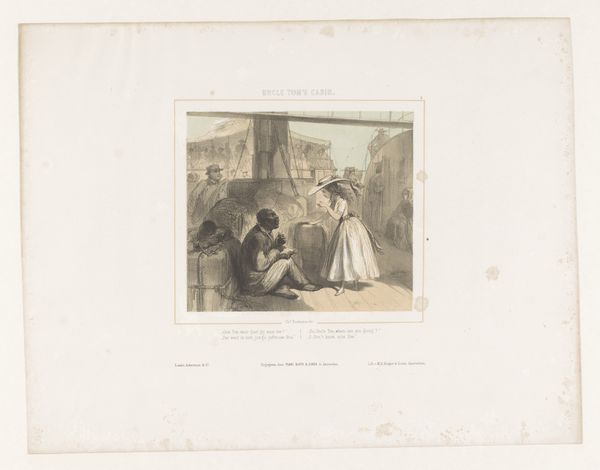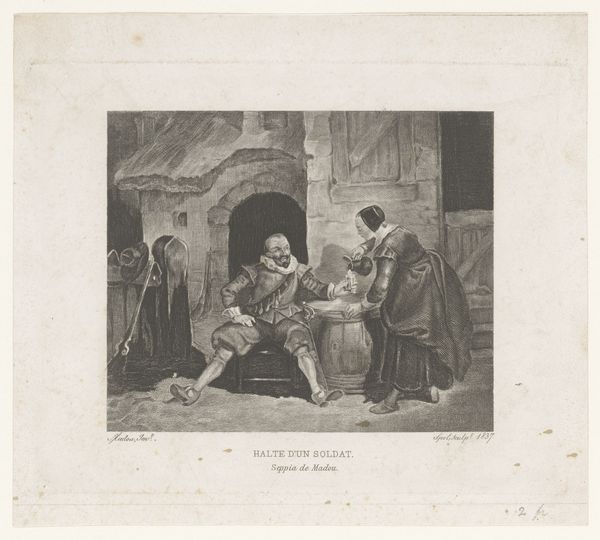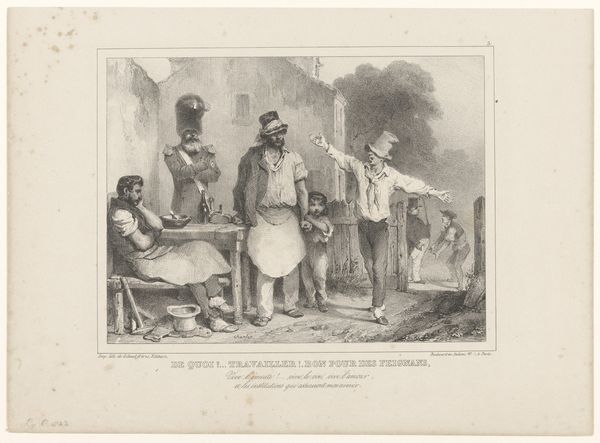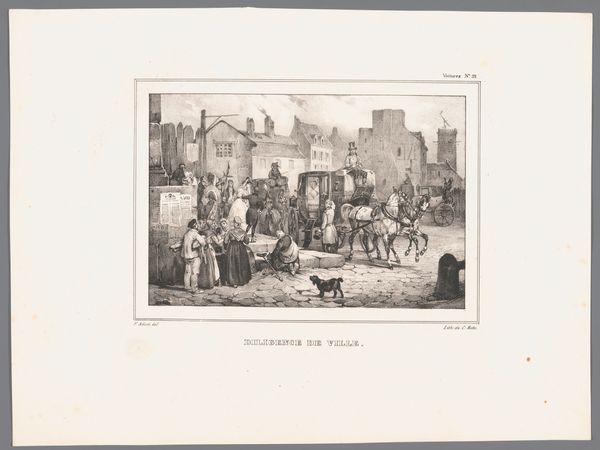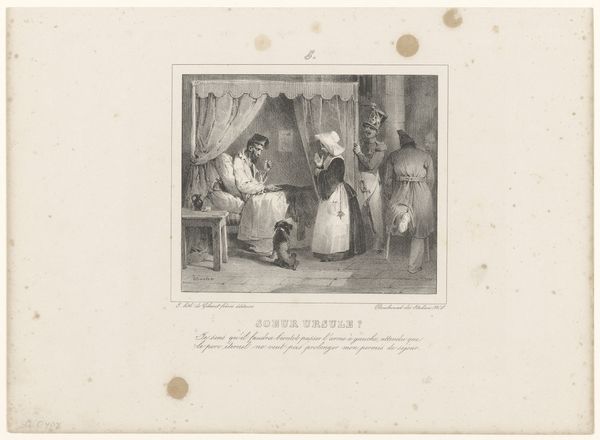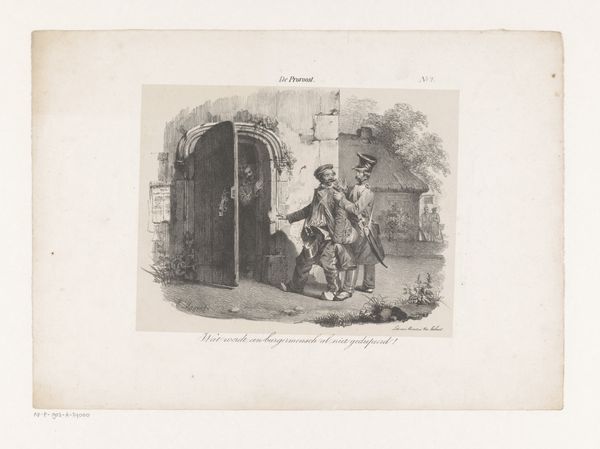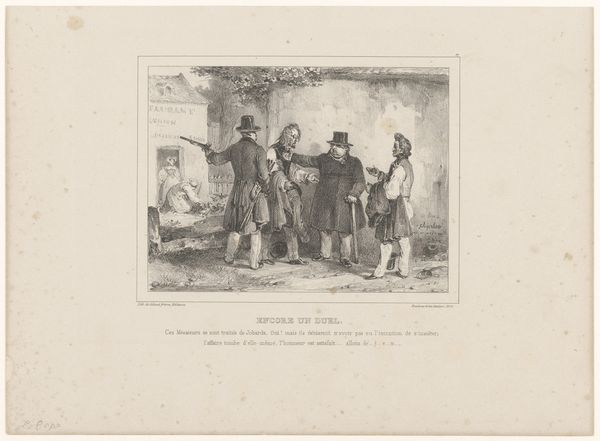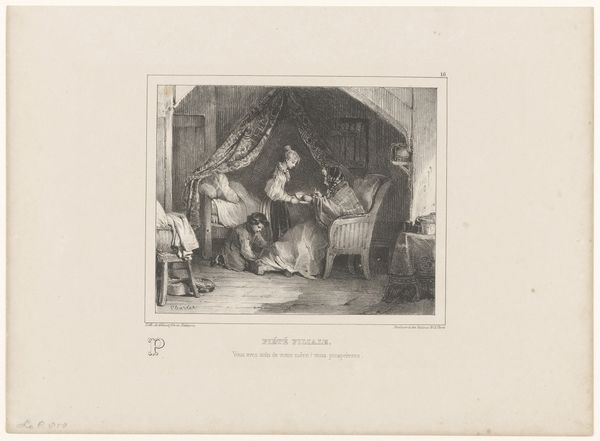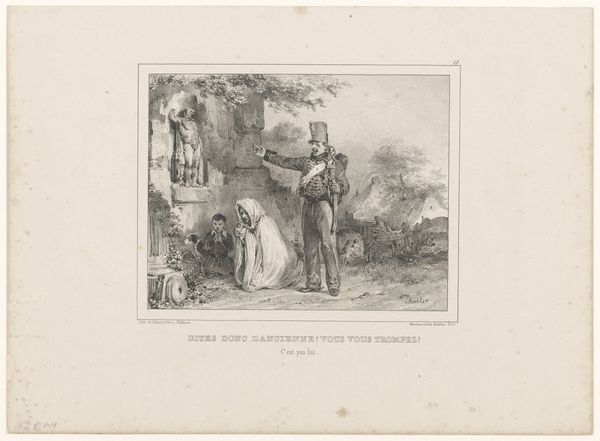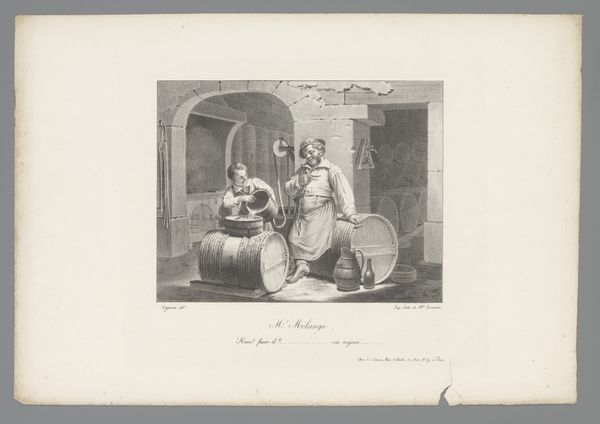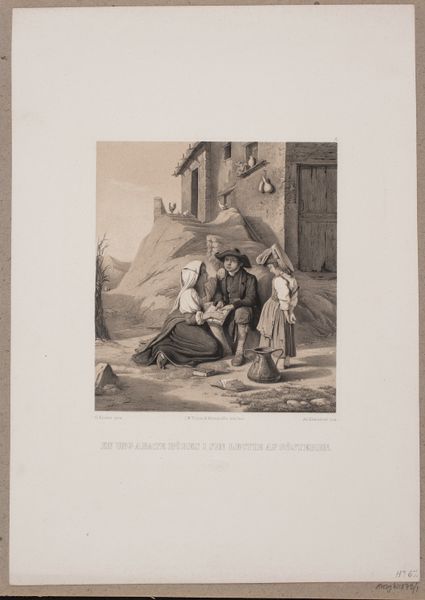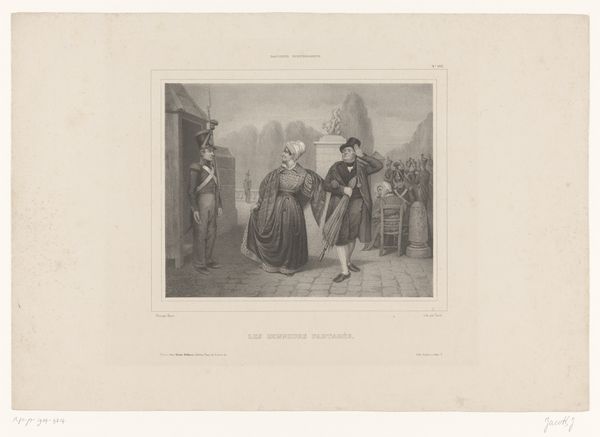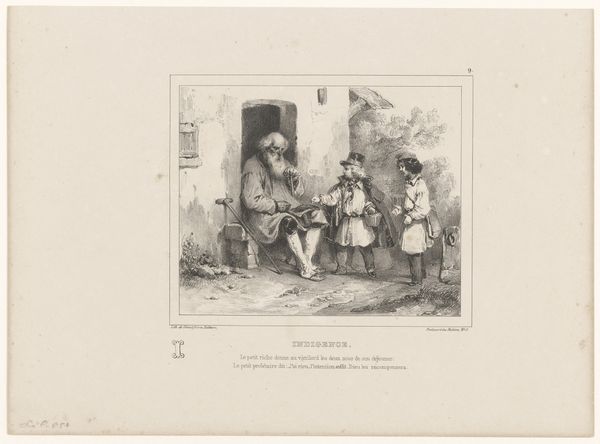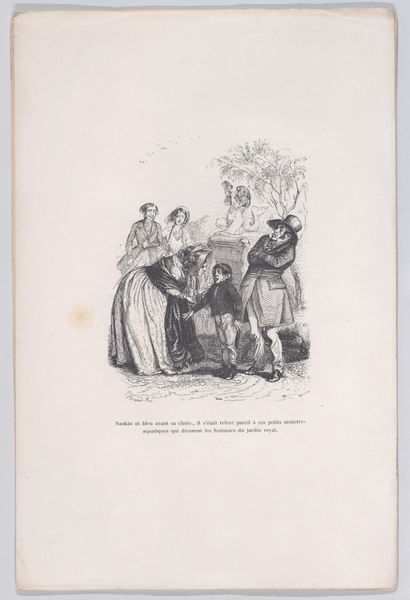
print, etching, engraving
#
narrative-art
# print
#
etching
#
figuration
#
romanticism
#
cityscape
#
genre-painting
#
engraving
Dimensions: height 290 mm, width 424 mm
Copyright: Rijks Museum: Open Domain
Curator: The atmosphere feels charged in this etching, would you agree? Editor: It's Auguste-Xavier Leprince’s “Oude straatveger berispt jonge straatveger,” or "Old Street Sweeper Reprimanding a Young Street Sweeper" created in 1824. A very telling depiction of early 19th-century labor. I notice a tension primarily conveyed by the posture and the slightly dramatic chiaroscuro. Curator: Indeed. Notice how the limited tonal range intensifies the contrasts? Consider the materiality of etching – the deliberate mark-making to create that light and shadow across the built environment, those rough, aged stones, and also the fabric. Editor: Precisely. The linear quality emphasizes the romantic ideal even amidst the very clear working-class scenario presented in the work. The older sweeper’s hand gesture – the upturned palm – feels quite stagey and declamatory. This adds to the heightened tension, and implies some kind of instruction or order in the working relationship depicted. Curator: I agree. Consider the context. Post-revolution, such representations of everyday laborers took on symbolic weight. How does it serve the State’s needs to showcase a society, which is orderly, even if there's some intergenerational conflicts? I feel it does this successfully, due to the emphasis on form, where clarity takes precedence over realism. The romanticism certainly gives it that quality, rather than some brutal form of reportage. Editor: Interesting point. The figures and setting, framed tightly within the pictorial space, suggest a specific social observation as well, perhaps the changing demographics, and division of labour during this post-revolution landscape in Paris? The material limitations perhaps give greater impact. Curator: Certainly, the material and production speak to this reality – the availability, the tradition of printmaking, versus an embrace of oil. So much social narrative is told in material choices. Editor: I’d agree with this take. I can see how Leprince attempts to capture the essence of early modern Parisian life through carefully composed lines, while creating a slightly tense narrative through his material processes and his stylistic romantic treatment. Curator: Ultimately a dialogue is crafted here – a dialogue not only between workers, but between artistry and production. A dialogue continued by the observer themselves.
Comments
No comments
Be the first to comment and join the conversation on the ultimate creative platform.
